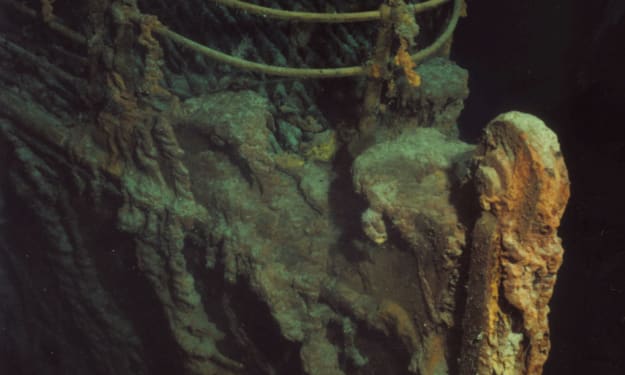The Real Story Behind The Disturbing ''FRANKLIN EXPEDITION''
THE REAL STORY

The Real Story Behind The Disturbing FRANKLIN EXPEDITION
The Franklin Expedition of 1845 to 48 is considered one of the most shocking and curious sea journeys ever taken place. The purpose of the campaign was to locate the elusive Northwest Passage through the vast sea lines of Canada and to document magnetic data to aid sailors with navigational support. However, the adventure culminated in what many consider to be the most disastrous polar exploration ever recorded with all 129 crew members and officers of the HMS Aabus and HMS Terror dying under very strange circumstances.
The British Navy dispatched numerous ships and a massive effort to hunt down the Explorers, but these attempts were in vain as only a few bodies and traces of information were found at the time when the boats and bodies of the doomed Expedition were finally found. The investigation opened up a terrifying discovery.
The Franklin Expedition was a tragic and disappointing venture that assisted in gaining knowledge and assorting a navigational blueprint of the Arctic Passage and surrounding regions, thus providing future explorers a better chance of locating it. Captain Sir John Franklin, born on April 16th 1786 in Psby, England, was well-regarded in maritime circles and entered the Royal Navy at age 14. He served in the battles of Trafalga and New Orleans before taking command of the Trent on Captain David Pin's Arctic Expedition in 1818.
Franklin explored areas of the Arctic Ocean on several occasions between 1819 and 1827 before being knighted in 1829 and serving as governor of Van Diamond's land now Tasmania from 1836 to 1843. The expedition's tragic and disappointing consequences have left a lasting impact on the history of maritime exploration and the fate of those who embarked on such dangerous voyages.
Captain Sir John Franklin, born on April 16, 1786 in Psby, England, was a respected maritime figure who embarked on an expedition to the Northwest Passage. The expedition was considered a worthwhile venture, as it provided future explorers with a better chance of locating the elusive passage. Franklin, along with Captain Matthew Flinders, the Great British Navigator and cartographer, circumnavigated the region from 1801 to 1803, serving in the battles of Trafalga and New Orleans before taking command of the Trent on Captain David Pin's Arctic Expedition in 1818.
Franklin's experience in mapping the area was crucial to the expedition, and he was contacted by second Secretary of the Admiralty Sir John Barrow in 1845. The men decided to take on the challenge, ensuring that their ships were strengthened with additional layers of iron and wood within the bows and fitted with steam engines to support heating and water systems. The ships were also prepared to cope with harsh conditions, with pigs, hens, canned soup, vegetables, 32,000 preserved meat, 1,000 lbs of raisins, and 580 gallons of pickles on board.
On March 19, 1845, the HMS Arabus and HMS Terra set off towards the Orany Islands in Scotland for their first expedition in search of the Northwest Passage. Despite the beautiful scenery and determination to succeed, things began to turn sour when the crew docked in the large Western Bay Area of Disco Bay in Greenland. Franklin ran a tight ship, banning excess consumption of alcohol and curse words amongst those on board. He dismissed five sailors from continuing the journey, and after two months of sailing, they crossed into the Canadian territory of Nunavut, passing through Bayan Island.
During this passage into the Waters of Lancaster Sound, the ships were seen for the last time by a group of Europeans on a wailing expedition. After two years, nothing was seen or heard from the crew of both ships. In 1848, Sir John Franklin's second wife, Lady Jane Franklin, called for a search and rescue team to locate the men or detect their last known whereabouts. More than 40 expeditions were appointed and commissioned by the Admiralty, becoming the largest naval search party to date. However, only a few clues were found, suggesting that something had gone wrong and the men were either in danger or more likely dead.
The Franklin Expedition was a tragic voyage that took place in the Arctic and subarctic regions. The crew, including Franklin Sailors John Hartell, John Torington, and William Brain, faced numerous hardships and deaths, including malnutrition, madness, and cannibalism. This led to outrage and resentment among the Inuit people, who spoke of the horrifying ordeals they endured.
During the search, search parties discovered historical primitive campsites and the graves of the crew members, including Franklin Sailors John Hartell, John Torington, and William Brain. These graves were dated 1846 and 1850 respectively. Scottish Explorer John Ray, who had been conferred with the Inuit during his quest across the Gulf of Alaska, found a mass section of human remains that seemed to be belonging to the crew. He noted that many of the bones were broken in numerous places and displayed evidence of knife markings suggesting that the crew may have resorted to cannibalism to survive.
In 1981, Canadian forensic professor of anthropology at the University of Alberta, Owen Bey, founded the Franklin Expedition forensic anthropology project. With his expertise in human skeletal biology, Bey has assisted the Royal Canadian Mounted Police and other agencies in criminal investigations and accidents. In 1984, the bodies of Harnell Brain, Torington, and Torrington were exhumed and analyzed, finding all three men showing signs of malnutrition, pneumonia, and high levels of lead in their systems.
In 1984, the Arctic Research Foundation found the Terror in a bay of water in the Kitic Miot region 45 meters away from Tara Bay. This eerie coincidence led some to believe that something mysterious or otherworldly occurred, as both ships' hulls were found to be fully intact. Scholars dismissed paranormal intervention and believed that the men were forced to abandon their posts, as any attempt at tackling the overwhelming icy territory would have been futile.
Artifacts and personalized items found during the search, rescue, and salvage expeditions were transferred to the National Maritime Museum in Greenwich, London in 1936. The ships remained dormant on the Arctic floor where they met their tragic end and plunged Ed into the unforgiving waters.
The Northwest Passage was finally overcome in 1905 by Norwegian Explorer Ral Amundsen, who successfully navigated through the midsection of the trail and arrived at the bord sea. In 1944, Sergeant Henry A Larson completed the first single season of the Transit, a successful voyage on a Scania sailing vessel. Since then, boats ranging from smaller structures to cruise ships have traversed the Northwest Passage, with rising Earth temperatures reducing the amount of ice and providing a safer passage for those attempting to travel across it.
The Franklin Expedition was a doomed venture, and the fate of the crew remains a mystery. The anxiety, heartache, and hardships faced by the women, children, and families of the sailors is equally frightening, especially during years of receiving no word from their husbands and fathers. As we continue to understand the world around us, we must remember that mother nature is unforgiving and nothing can prepare us for what comes next.
About the Creator
Dhiraj Jain
Dhiraj is a cricketer with a dream of becoming an acclaimed author. Fueled by a lifelong love for storytelling,
"joined creative writing courses," "devoted weekends to crafting short stories," etc.






Comments (1)
Your narrative effectively captures the intrigue and tragedy of the Franklin Expedition, providing a comprehensive overview of its significance and enduring mysteries. Well done!